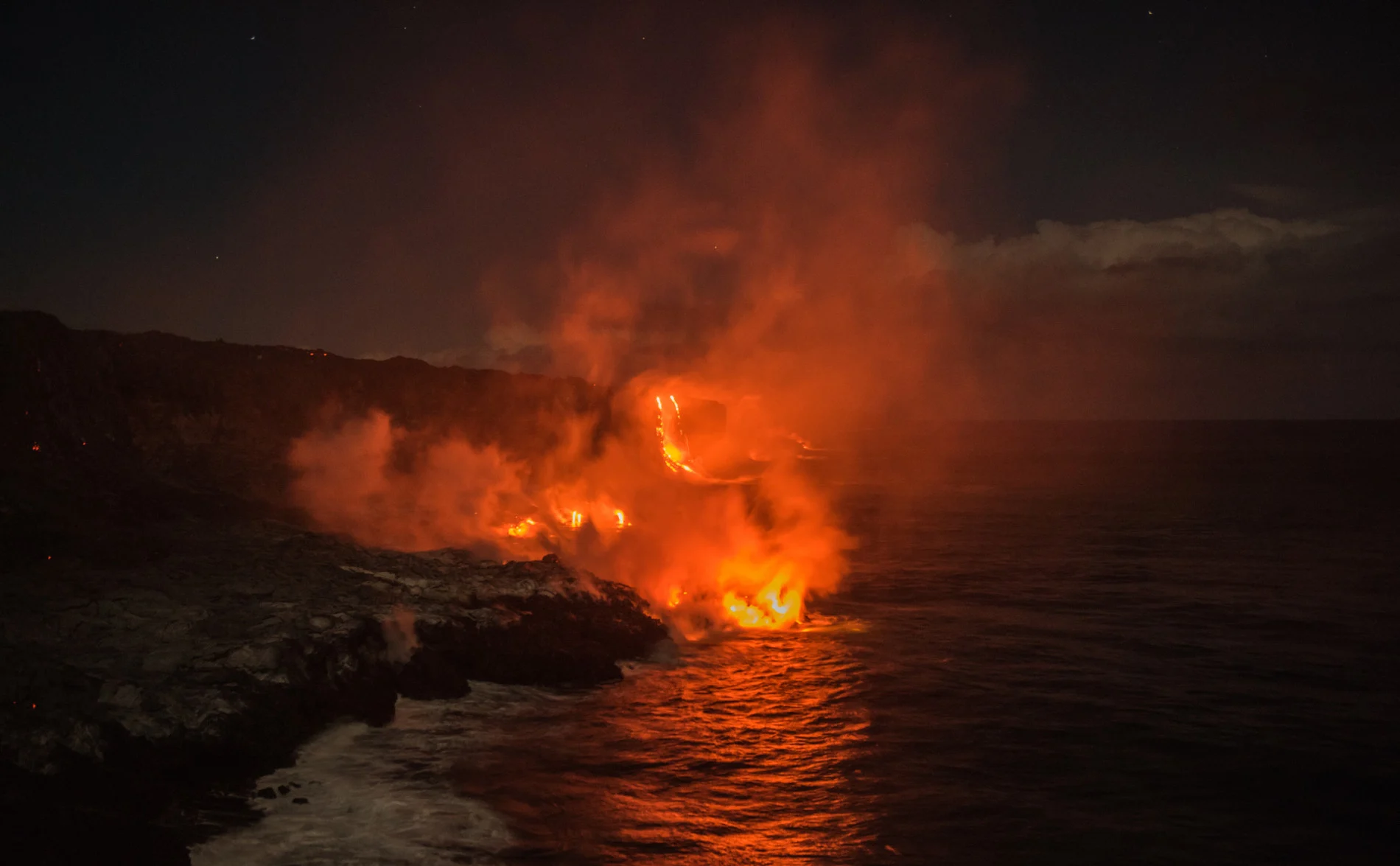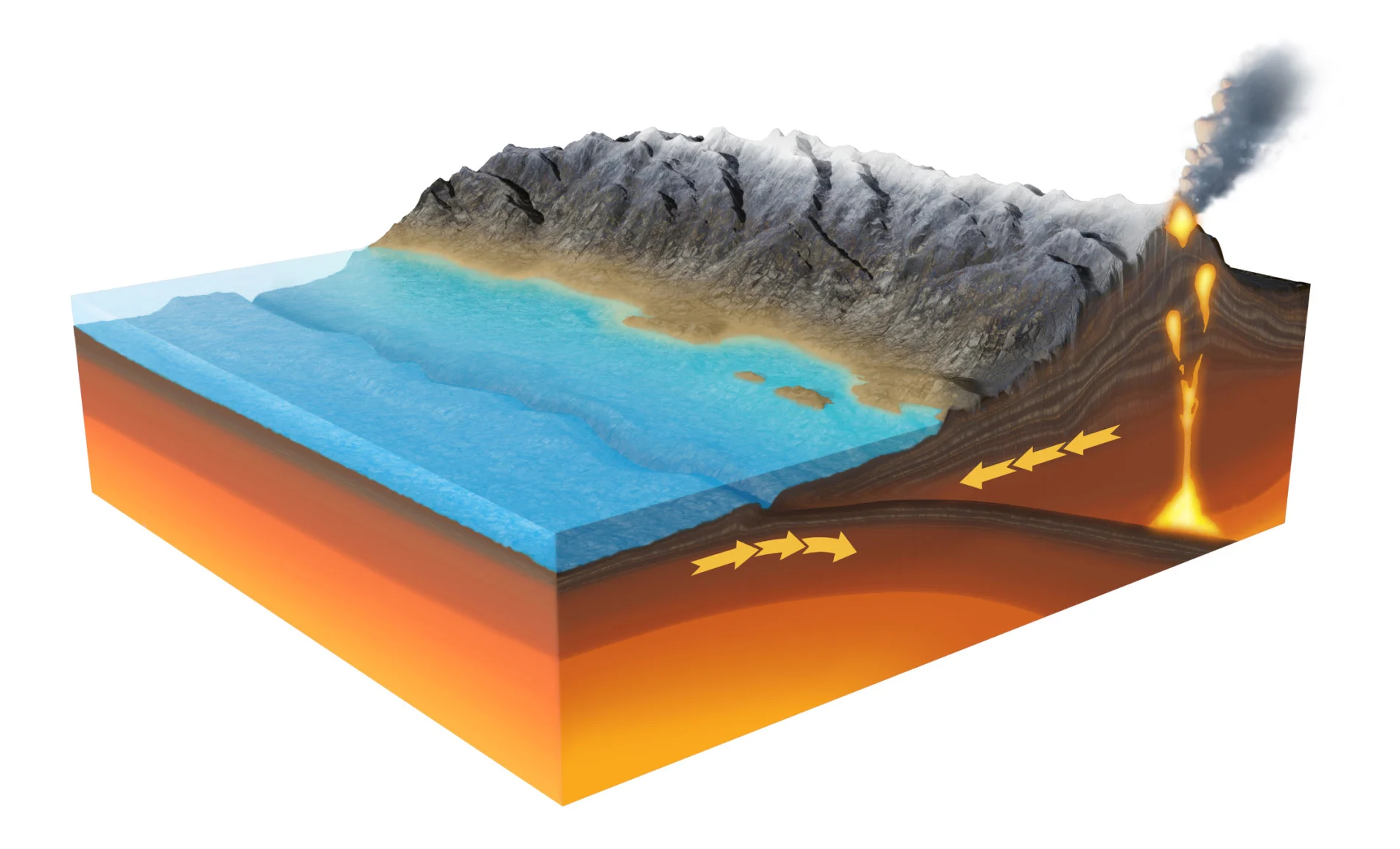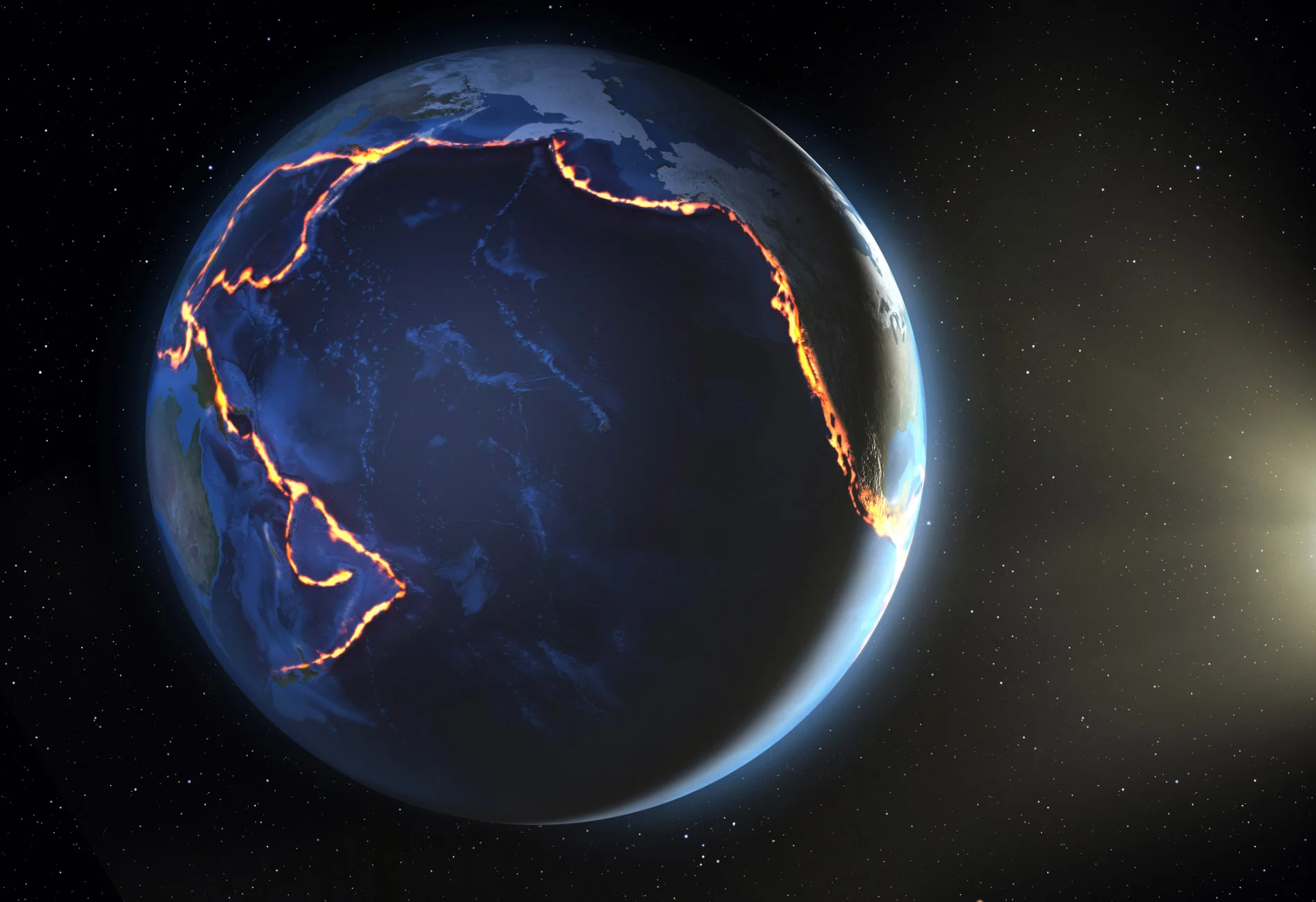
Earth's interior captures more carbon than previously thought, study finds
Significant amounts of carbon are plunging deep into the Earth’s interior, which researchers say raises the question of how this mechanism can be studied to develop new carbon capture technologies.
Scientists have long known that colliding tectonic plates remove carbon from the atmosphere, but a new study published in Nature Communications reports that these movements bury significantly more carbon than previously thought.
Tectonic plates, Earth’s outermost layer that we live on top of, are always in motion and bumping into each other. An area where two plates converge and one slides underneath the other is called a subduction zone, such as the Cascadia Subduction Zone near North America’s west coast. The Ring of Fire, an area throughout the Pacific Ocean where earthquakes and volcanoes occur, is also characterized by subduction zones.

An illustration of one tectonic plate moving under the other (subduction). (Mark Garlick/Science Photo Library. Getty Images)
In subduction zones, enormous amounts of ocean water are transported by the subducting plate and oceanic sediments, such as seashells and microorganisms, are sent plunging towards Earth’s interior.
Carbon dioxide dissolves from the atmosphere into the ocean and is used by mollusks to create seashells and also eventually forms limestone. Based on these processes, scientists have long theorized that the carbon in sediments and shells gets released back into the atmosphere as carbon dioxide gas after they travel into the Earth's interior and are spewed out by volcanoes.
However, experiments conducted at the European Synchrotron Radiation Facility challenge this hypothesis.
This facility in France is used to recreate the high pressures and temperatures found in subduction zones. The researchers simulated subduction zone conditions to analyze how carbon behaves around volcanoes in the Pacific Ring of Fire.

The 'Ring of Fire' is a region of tectonic plate boundaries around the Pacific Ocean, where earthquakes and volcanoes are common. The Ring of Fire has formed as surrounding plates collide with and destroy the Pacific Plate. (Mark Garlick/Science Photo Library. Getty Images)
The experiments revealed that approximately 66 per cent of the carbon sinks deep into the Earth where most of it will eventually transform into diamonds, which presents a significant opportunity for future carbon capture technology.
“Our results show that these minerals are very stable and can certainly lock up carbon dioxide from the atmosphere into solid mineral forms that could result in negative emissions,” Simon Redfern, study co-author and Dean of the College of Science at NTU Singapore, said in the study’s press release.
Compared to the amount of knowledge about carbon storage on the Earth’s surface, there is less known about carbon stores inside the planet, where carbon cycles take millions of years. The researchers say that in addition to researching new methods for carbon capture, having a better understanding of the globe’s carbon cycle will help model what our future climate will look like.
“One of the solutions to tackle climate change is to find ways to reduce the amount of carbon dioxide in Earth’s atmosphere. By studying how carbon behaves in the deep Earth, which houses the majority of our planet’s carbon, scientists can better understand the entire lifecycle of carbon on Earth, and how it flows between the atmosphere, oceans and life at the surface,” the press release states.
Thumbnail credit: Archershoots. Moment. Getty Images












